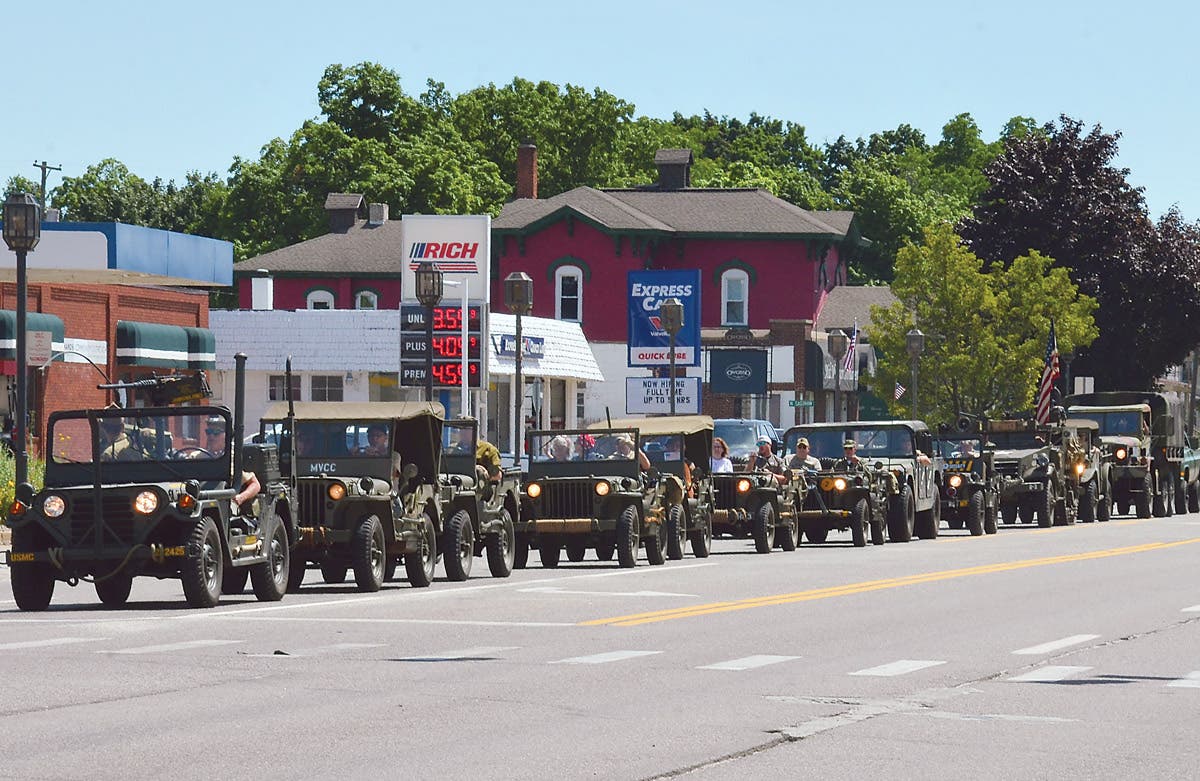Victory in Indiana
Two and a half hours equally distanced from Chicago, Detroit and Indianapolis in the small Indiana town of Auburn, is one of the largest collections of WWII-era military vehicles in this country.
Two and a half hours equally distanced from Chicago, Detroit and Indianapolis in the small Indiana town of Auburn, is one of the largest collections of WWII-era military vehicles in this country. A massive sign on the museum grounds announces that you have arrived at the home of the "World War II Victory Museum."
The price of admission to the museum allows one to see the 140+ wartime vehicles and other military hardware. The ticket also allows access to three other museums housed within the same huge facility. In addition to the Victory Museum, the structure contains the Kruse Automotive & Carriage Museum, that features many race and classic cars, the Philo T. Farnsworth Television History Center and the Northeast Indiana Baseball Hall of Fame and History Center.
A replica of a P-51 soars over one of the galleries in the WWII Victory Museum in Auburn, IN. The museum houses over 140 military vehicles, with the current emphasis on the war in Europe. However, a recently announced expansion plan will broaden this to include all conflicts American troops have been involved in. WWII Victory Museum
Dean Kruse, along with his family, started the Kruse Foundation with the mission of "celebrating America's heritage by providing the public with an entertaining, educational experience focused on the preservation, exhibition and interpretation of historical treasures." Kruse is a name well known to automotive enthusiasts all over the country. Kruse International is one of the largest automotive auction firms in the world. Though specializing in vintage and collector cars, the firm is sometimes contacted to liquidate museum collections. This is what led to the meeting of Dean Kruse and Guy F. Arend.
The American soldier is memorialized in this statue outside the entrance of the Victory Museum. Admission to the museum, as well as three others in the building, is a modest $10.00, WWII veterans with ID are admitted free.
In 1989, Arend had founded the Victory Memorial Museum in Messancy, Belgium. This was not the first museum that Arend had been instrumental in creating.
Arend was instrumental in the creation of the "Bastogne Nuts Museum" in the famed Belgian village in 1950. This museum was a tribute to the Allied defenders of the town, and General McAuliffe's response to German surrender demands. In 1975, the Bastogne Museum moved and expanded and was considered complete. Arend then turned his attention to the creation of a larger museum, the World War II Victory Museum, which he built 30 miles away in the Arlon-Messancy area.
Upon entering the museum, the first exhibit illustrates the Nazi threat, depicting their advance through Poland. Although perhaps a half-dozen of the vehicles on exhibit are replicas, the bulk of the collection is authentic, restored vehicles, including this grouping.
A traffic realignment had substantially reduced visitors for the Belgian museum, forcing Mr. Arend to consider liquidating the collection. Rather than dispersing the collection, Arend sold the entire contents to Dean Kruse.Kruse transported it to his Auburn home. The relocation of the collection from the Belgian facility to its current home took place between October 2001 and January 2002.
America's entry into WWII is illustrated in this exhibit, showing an International Harvester M-1-4 truck on a "Pearl Harbor" dock. The nicely restored truck is shown in the US Navy paint scheme.
The tanks in the Belgium collection did not make the trip, but 140 other armored and soft skin vehicles did. The extensive collection of German military vehicles--probably the largest gathering of Nazi-era soft-skin vehicles on this continent--is for many people the highlight of the museum. Support vehicles, which make up the bulk of any mechanized army, are well represented, including many rare types from various nations. The scope of the vehicles ranges from a rare armored cab M26 tank transporter with corresponding trailer to an array of motorcycles. Seven different nation's vehicles are represented.
These German troopers, standing in front of two Raupenschlepper Ost (RSO) tractors and a motorcycle, are part of an exhibit illustrating the failed German advance into Russia. Several versions of the RSO, a scarce vehicle anywhere, particularly in this country, are found in the museum. WWII Victory Museum
While the bulk of the museum exhibits came from the Belgian museum, other vehicles have been loaned or donated to the museum. Among the additional vehicles are a pair of 2-1/2-ton trucks on loan from the Studebaker Museum in nearby South Bend, Indiana.
Another view of the exhibit illustrating the German collapse and a group of German vehicles under air attack. Nowhere else in the US can such a variety of Axis vehicles be seen.
Kruse recently announced an expansion plan for the museum, not only expanding the facility, but its scope as well. Dubbed the National Military History Center, the plan, which is currently in the fundraising phase, involves a new mission which will include tributes to the American fighting soldiers of all wars. Not only will their gear be displayed, but that of their adversaries as well. 102,000 sq. ft. will be added to the museum over the next two years at a cost of $20,397,000. Construction will begin in January 2008.
This exhibit recreates the famous meeting of allied forces by showing a US tank destroyer and a Russian Lend-Lease half-track. The nicely restored M18 is the heaviest piece of Allied armor in the museum. WWII Victory Museum
The Victory Museum's hours of operation are 9a.m.-5p.m. daily and the museum is closed only on Thanksgiving, Christmas Day and New Year's Day. Admission is charged For more information about the Victory Museum, visit its Web site at www.wwiivictory.org.








